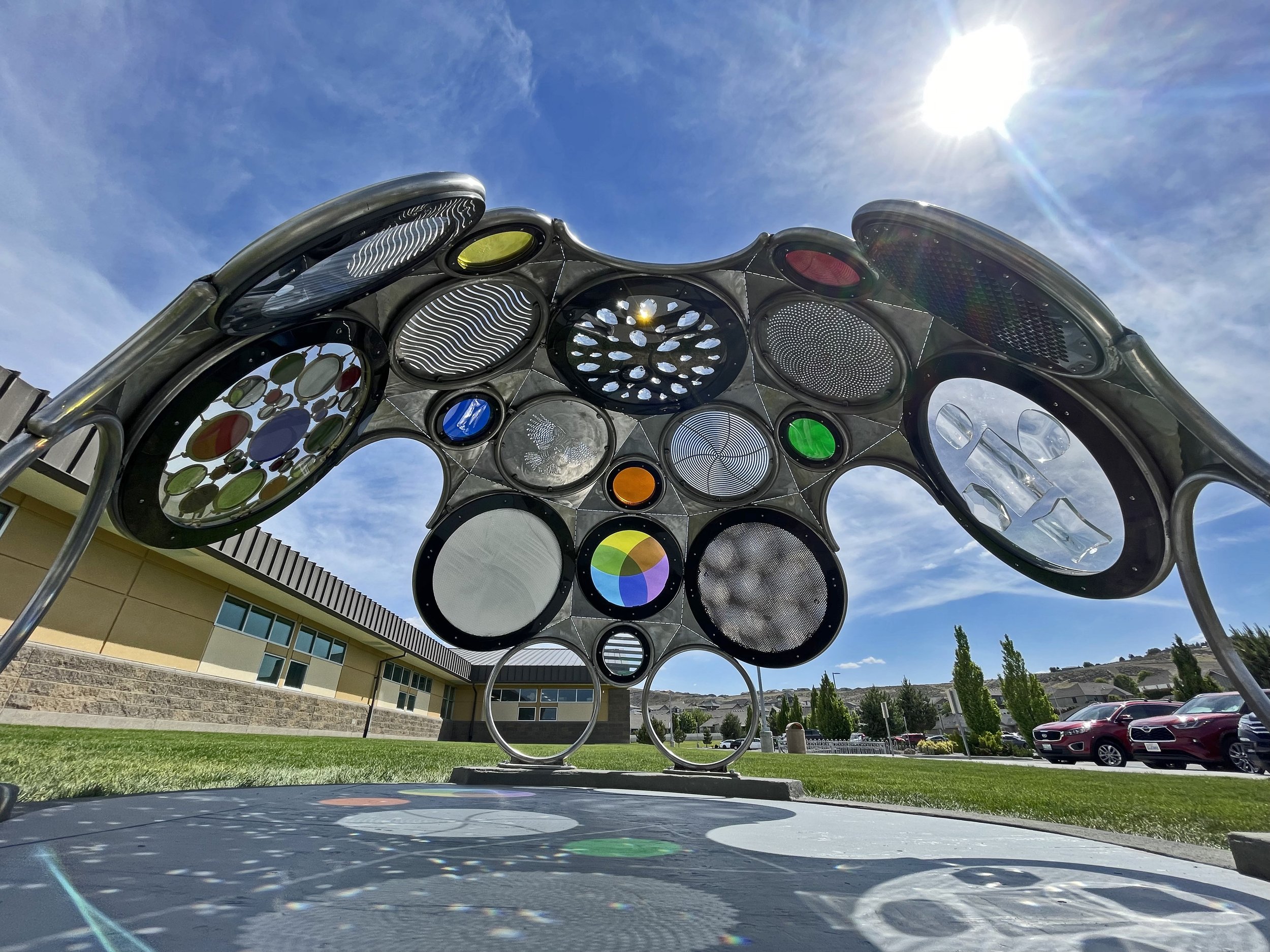David Cole and Michael Brown Interview: Solar Portals
Learn more about David Cole and Michael Brown’s Project: Solar Portals!
1. How long did the project take to build?
We developed the project over a period of 3 years, with the most intense part of the fabrication happening in the last 18 months.
2. What was the inspiration behind the project?
The quality of light at the site and the shadows it produced. Richland, WA is located above the 45th parallel and coming from the Bay Area, we really noticed the difference. The student population was really engaged with science and art. Interestingly enough, a large percentage of their parents were scientists who worked at the Hanford Nuclear Site.
3. What is your favorite part about the project?
The process of creating each portal and how it played with light and optics was like its own little piece. When we arrived and installed it, the effects we observed were even more pronounced and interesting than we had imagined.
4. How many people were involved in the building process?
Micheal and David worked with a number of assistants over the span of the project. In total, there were eight people whose collaboration made it possible.
5. Were there any complications in building the project?
The pandemic was a huge obstacle. We had counted on being able to fabricate many components at two studios with whom we had relationships, but they remained closed during the pandemic so we had to change our approach and use different tools. Budget constraints also really complicated things.
6. What are the materials involved in building the project/ where did you get the materials?
Stainless steel and poly carbonate were bought from large suppliers and a variety of other materials (marbles, chandelier crystals, colored acrylic) we found by scouring the internet.
7. Any fun/unique stories surrounding the project?
When we presented the finished sculpture to the students at Orchard Elementary, they were particularly excited by the idea that this piece was made especially for them. The idea that it was the only one of its kind (to our knowledge) really resonated with them and that made it feel like a special gift.
8. How has the public reacted to your art since installation?
Check out this video where the school kids first got the chance to play with it. https://youtu.be/1AEMwQXcaG8
9. How did the Rbhu Gives Back Grant help you?
With our limited budget, we could never have afforded the engineering support we got from Rbhu. We had seriously underestimated how expensive it would be to not only engineer the structure, but also the concrete foundation. Rbhu helped is in so many ways and were a pure delight to collaborate with. They used their considerable skills and resources to help bring our project to life.
Engineering Spotlight
Solar Portals was our initial inspiration for our Rbhu Gives Back grant program. This was a passion project, with the only objective being to create something for the kids! With a very limited budget but bursting with beautiful intention, we couldn't resist helping and so this became our first pro-bono project. It's built from a series of rolled stainless steel pipes, welded together where the members meet. The entire piece wouldn't fit on a single truck bed for transportation, so it has a single line of bolted connections at about the 1/3rd mark. The three points that meet the ground are supported by reinforced concrete footings with a small curved concrete grade beam to tie them together. David and Michael were an absolute JOY to work with and we couldn't be more happy with the finished product.

